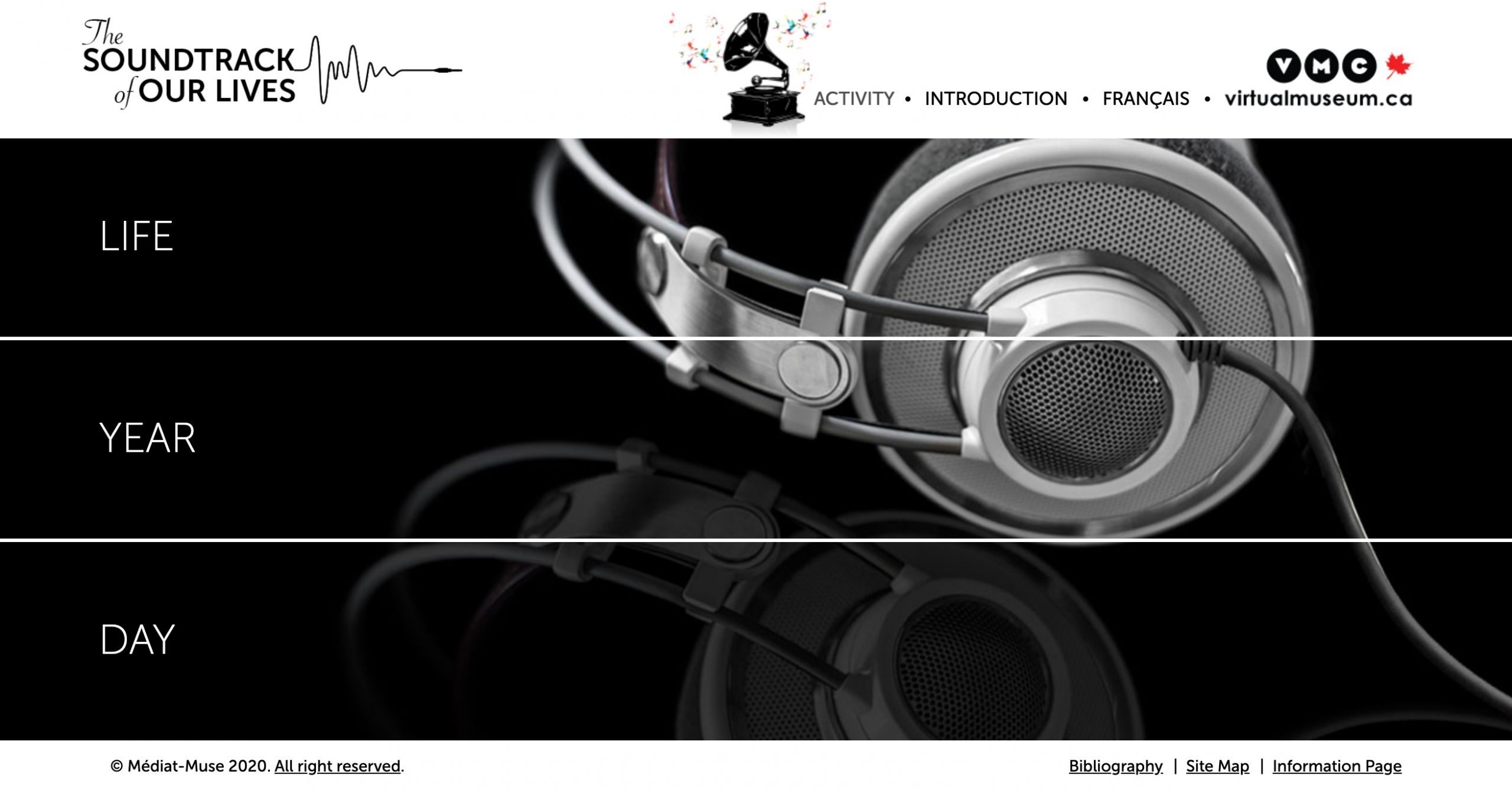Experience music and soundscapes of Quebec through an online exhibition
Music is typically a fundamental part of people’s lives. Through trying times, and uplifting times, it fuels many moments. Music carries a lot of meaning and can impact a moment instantly and is so easily accessible during our era. Yet, there are always new ways to interact with it. One new way to experience sound is through the Virtual Museum of Canada’s online exhibition called The Soundtrack of Our Lives. This particular exhibition stood out because it is focused on soundscapes and music, and not photos (though some do appear, they are not the focus), or sculpture. This exhibition focuses on the role of music in every aspect of our lives.
The Soundtrack of Our Lives is an online exhibition that is based around the music and soundscapes of Quebec. The exhibition is divided in three major categories that curate the overall experience: “Life,” “Year,” and “Day.” The category entitled “Life” focuses on the period of gestation to death, the “Year” category focuses on the four seasons, and the “Day” category highlights the moments from waking up to going to sleep. The exhibition mentions that the focus is for people to explore the way music operates in Quebec and how sounds have changed over time.
One of the elements that makes the exhibit so interesting is how it highlights the intersection of an overarching narrative and the individual narrative. In the category of “Life” there is a subcategory called “Childhood,” which features an opening piece with the sounds of xylophones and kids playing outside, creating a sense of nostalgia. Further subcategories for listening feature nursery rhymes and music in schools. These sounds are common in childhood, and allow for a more focused understanding of the various elements of childhood. The more specific the piece, the more individual it gets. However, they are still part of the overarching subcategory of “Childhood,” which is part of the overall narrative of this stage of life.
In the section on the seasons there is a similar structure. For the category on “Fall,” the first piece of music is loaded with heavy rainfall, blowing winds and an owl’s hoot. If you choose to go further into the section, there is a subcategory called “November, The Month Of the Dead.” There is a funeral march that plays, which is very sombre but fits the overall tone of what this month represents. According to the exhibition’s website, in November the Christian faith focuses on celebrating the dead. For example, the two first days of November, All Saint’s Day and All Soul’s Day, are set to honour saints and those who have passed away. While the funeral march that is played and the opening Fall piece are different, they both capture various elements of the season.
The part of the exhibition that stood out was in the category of “Day,” which features sounds of everyday life. During the COVID-19 global pandemic, where many people are spending more of their days at home, the sounds that encompass day-to-day life are especially relevant. In other words, people are generally more encompassed by these sounds because they are surrounded by them more. These sounds are the ones that shape the day, whereas before it may have been more focused on sounds outside the home. There is a subcategory called “The Appliances” that focuses on the sounds of a microwave oven and coffee machine. Both of these are sounds most of us hear often, and can sometimes ignore how essential they are to the course of our days. Also, for students, these two sounds are related to such important appliances in our lives.
Another element in the “Day” category is the part called “Waking Up.” There is a piece called “The Early Bird Catches the Worm” that features the many sounds that wake people up in the morning. These sounds can be annoying to most of us because we just want to sleep. However, hearing them in this context, we can reflect on how different our lives would be if we did not hear them.
There is also a brief activity that the viewer/listener can take part in, which involves filling a form that can be submitted. There are some basics that need to be filled in, but the focus is on the other questions that are asked. For example, there are questions about how you would like to spend the perfect Saturday, or what your favourite type of movie is, and these questions are accompanied by a drop-down menu with various selections. Once you have completed this, it creates a small trailer that would be your own personal soundtrack. This activity, while brief, allows for another element of interaction within the exhibit. It also highlights, once again, just how music can be a personalized experience. Of course, this activity is not perfect, and could be improved, should they keep it. One improvement could be to have more options in the drop down menu, to allow for more possible outcomes. More outcomes would mean that people could truly have a personalized experience in doing this activity. However, the activity still allows people to have a deeper interaction with the exhibit and music itself.
How does music play a role in our own lives? Music is no longer outside the self, but rather it becomes intertwined with every aspect of our lives. This exhibition captures that essence and allows those who partake to step outside of themselves and see how music can shape the various aspects of real life. It allows for people to potentially see their lives as mini-movies, and connect more deeply to the music and sounds they hear daily.
To experience The Soundtrack of Our Lives, visit thesoundtrackofourlives.ca/.




